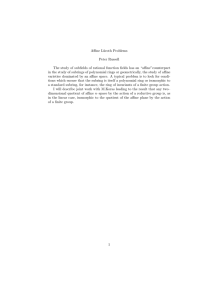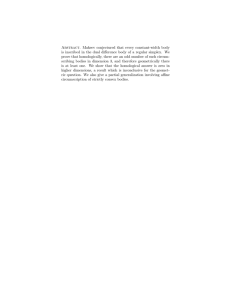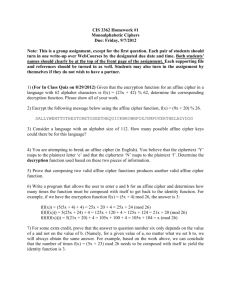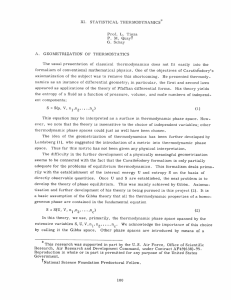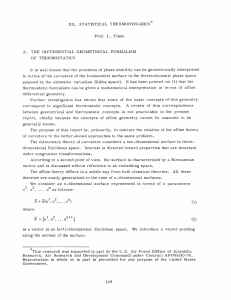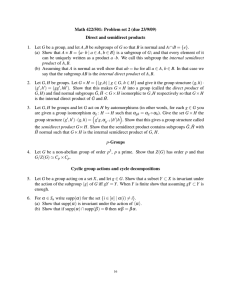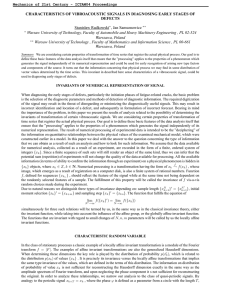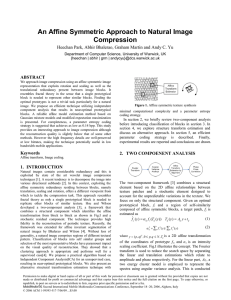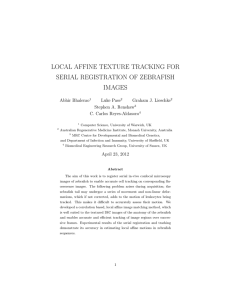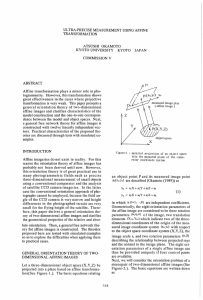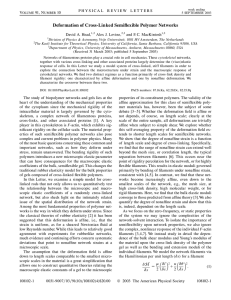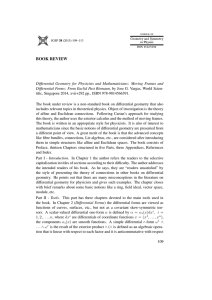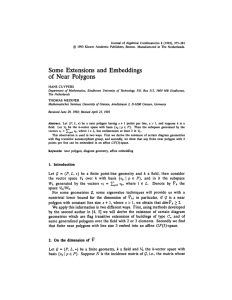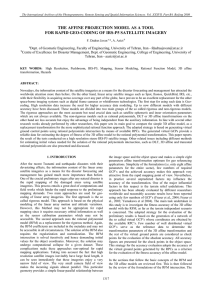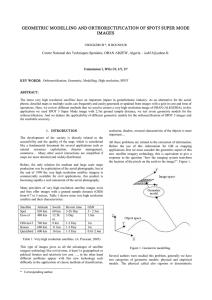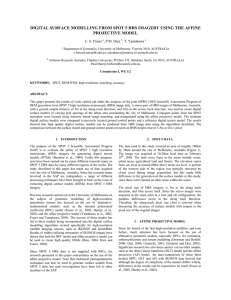Geometry,
advertisement
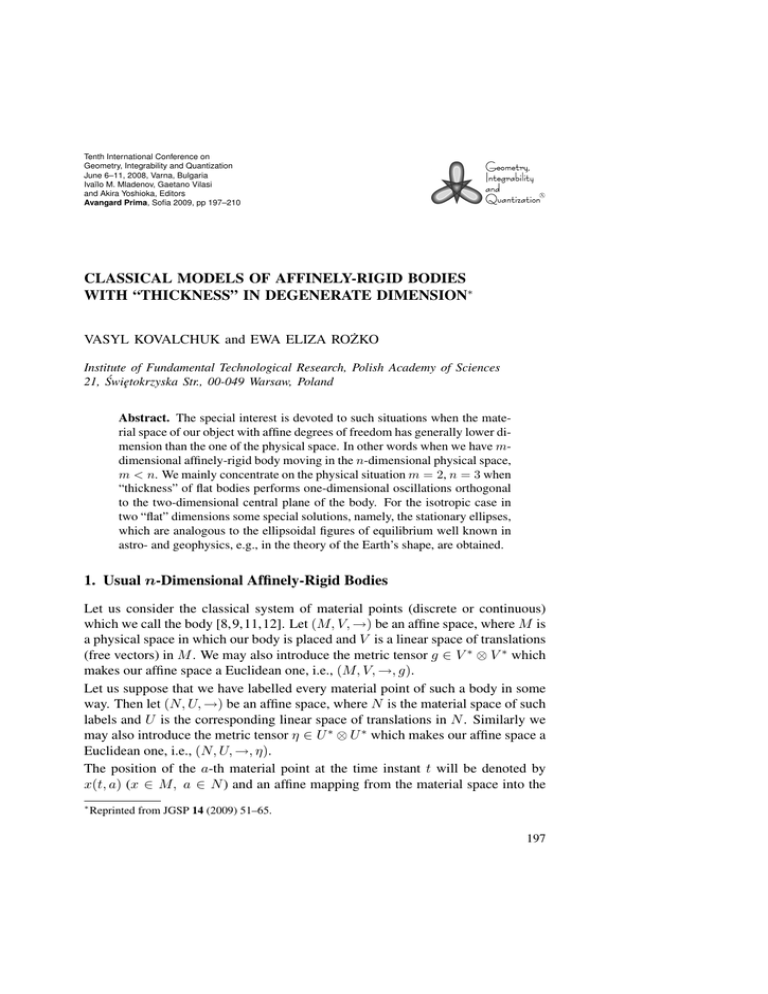
Tenth International Conference on Geometry, Integrability and Quantization June 6–11, 2008, Varna, Bulgaria Ivaïlo M. Mladenov, Gaetano Vilasi and Akira Yoshioka, Editors Avangard Prima, Sofia 2009, pp 197–210 Geometry, Integrability and X Quantization CLASSICAL MODELS OF AFFINELY-RIGID BODIES WITH “THICKNESS” IN DEGENERATE DIMENSION∗ VASYL KOVALCHUK and EWA ELIZA ROŻKO Institute of Fundamental Technological Research, Polish Academy of Sciences 21, Świȩtokrzyska Str., 00-049 Warsaw, Poland Abstract. The special interest is devoted to such situations when the material space of our object with affine degrees of freedom has generally lower dimension than the one of the physical space. In other words when we have mdimensional affinely-rigid body moving in the n-dimensional physical space, m < n. We mainly concentrate on the physical situation m = 2, n = 3 when “thickness” of flat bodies performs one-dimensional oscillations orthogonal to the two-dimensional central plane of the body. For the isotropic case in two “flat” dimensions some special solutions, namely, the stationary ellipses, which are analogous to the ellipsoidal figures of equilibrium well known in astro- and geophysics, e.g., in the theory of the Earth’s shape, are obtained. 1. Usual n-Dimensional Affinely-Rigid Bodies Let us consider the classical system of material points (discrete or continuous) which we call the body [8,9,11,12]. Let (M, V, →) be an affine space, where M is a physical space in which our body is placed and V is a linear space of translations (free vectors) in M . We may also introduce the metric tensor g ∈ V ∗ ⊗ V ∗ which makes our affine space a Euclidean one, i.e., (M, V, →, g). Let us suppose that we have labelled every material point of such a body in some way. Then let (N, U, →) be an affine space, where N is the material space of such labels and U is the corresponding linear space of translations in N . Similarly we may also introduce the metric tensor η ∈ U ∗ ⊗ U ∗ which makes our affine space a Euclidean one, i.e., (N, U, →, η). The position of the a-th material point at the time instant t will be denoted by x(t, a) (x ∈ M, a ∈ N ) and an affine mapping from the material space into the ∗ Reprinted from JGSP 14 (2009) 51–65. 197


